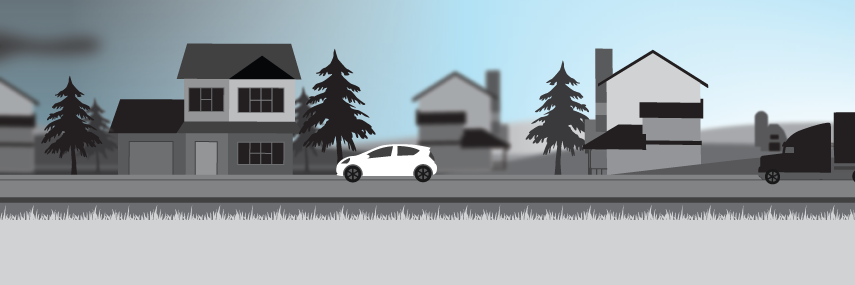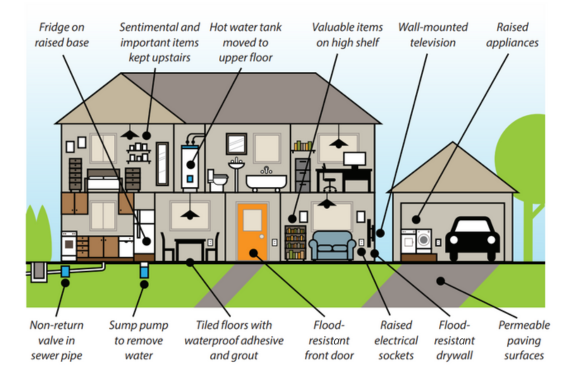Getting ready before a flood

If you're in an area that is prone to flooding, or you just want to be proactive, there are a number of activities you can complete to prepare for a flood.
On this page
- Protect your home and property
- Make an emergency plan
- Build grab and go bags
- Research insurance options
- Prepare your farm or agriculture business
Protect your home and property
There are simple steps you can take in and around your home and property to help prevent flood damage.
Steps everyone should take
- Store valuables and important items or documents in water-tight containers or in higher places, like on a tall shelf or upper floor
- Clean your gutters regularly
- Keep nearby storm drains clear of debris
- In the winter, clear snow at least 1 to 1.5 metres away from your home's foundation
Also consider these steps
- Raise large appliances, furnaces, hot water heaters, and electrical panels onto wood or cement blocks above the potential water level (if an item can’t be raised, consider anchoring it and protecting it with a floodwall or shield)
- Anchor any oil tanks or fuel supplies to the floor
- Install backflow valves on basement floor drains, washing machine drains, toilets and sink drains
- Install tiled floors with waterproof adhesive and grout
- Raise electrical sockets on the ground floor of your home
- Protect your gas and electrical systems and appliances with tips from Technical Safety BC
- Dig or trench to protect your property from flooding. Call 1-800-474-6886 before you dig to prevent damage to gas or electricity lines
- Apply weather protection sealant around basement windows and the base of ground-level doors
- Install a sump pump
- Install permeable paving surfaces for sidewalks and driveways
- Make sure your gutters’ downspouts extend at least 2 metres from your basement wall. Water should drain away from your property and neighbouring properties
- Install permanent safeguards, such as self-closing flood barriers, designed to keep water out of your home for as long as possible
- Enhance your landscaping so water drains away from your foundation
- Install flood-resistant drywall and exterior doors

Make an emergency plan
An emergency plan says how you and your household will respond to a disaster. It's one of the best steps you can take to prepare for a flood. Knowing what to do will reduce anxiety and help keep you focused and safe.
Make an emergency plan with our resources including a printable fill-in-the-blanks Home Emergency Plan or the interactive Emergency Ready Planner.
Create a profile for Emergency Support Services (ESS) before you need help. If you are evacuated during an emergency event, ESS can provide basic supports like accommodation, food, clothing and other temporary supports.
Make grab-and-go bags
If flood waters get too close to your home, it may become unsafe to stay and you’ll need to leave quickly. A grab-and-go bag is a small version of your emergency kit that you can take with you.
Research insurance options
Having insurance can protect you from having to pay out a huge amount in the event of a disaster.
Check with your insurance representative to determine if sewer backup and/or residential flood insurance is available for your property. You can also contact the Insurance Bureau of Canada at 1-844-227-5422 for information regarding home insurance.
Add your insurance information to your emergency plan to ensure it’s handy when you need it.
Prepare your farm or agricultural business
Flooding can have devastating consequences for the agricultural industry. Having a response plan is critical, especially when livestock relocation may be required. It’s up to agricultural producers, like all business managers, to have a comprehensive strategy to manage the risks they face.
